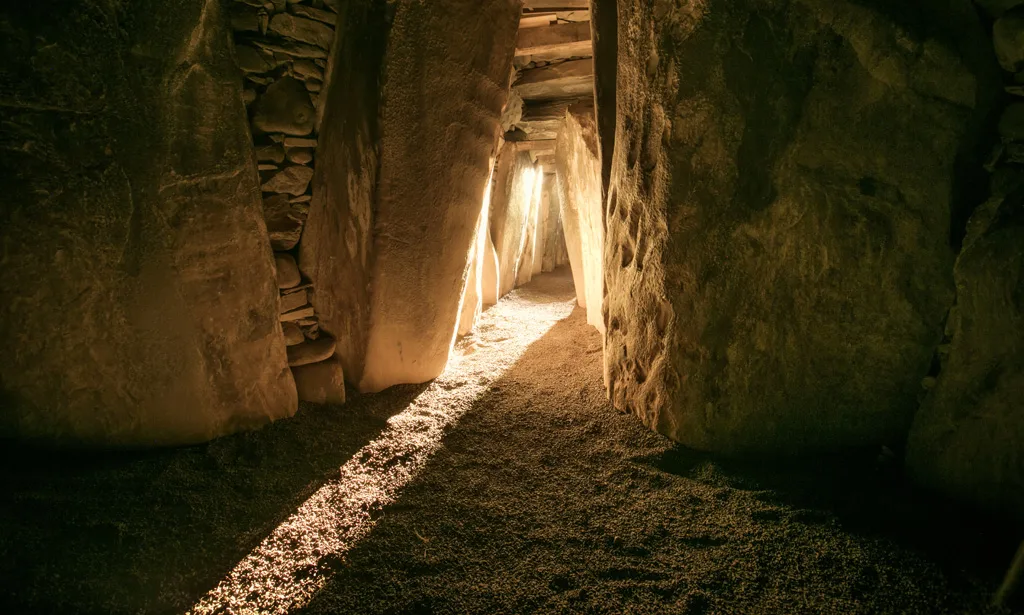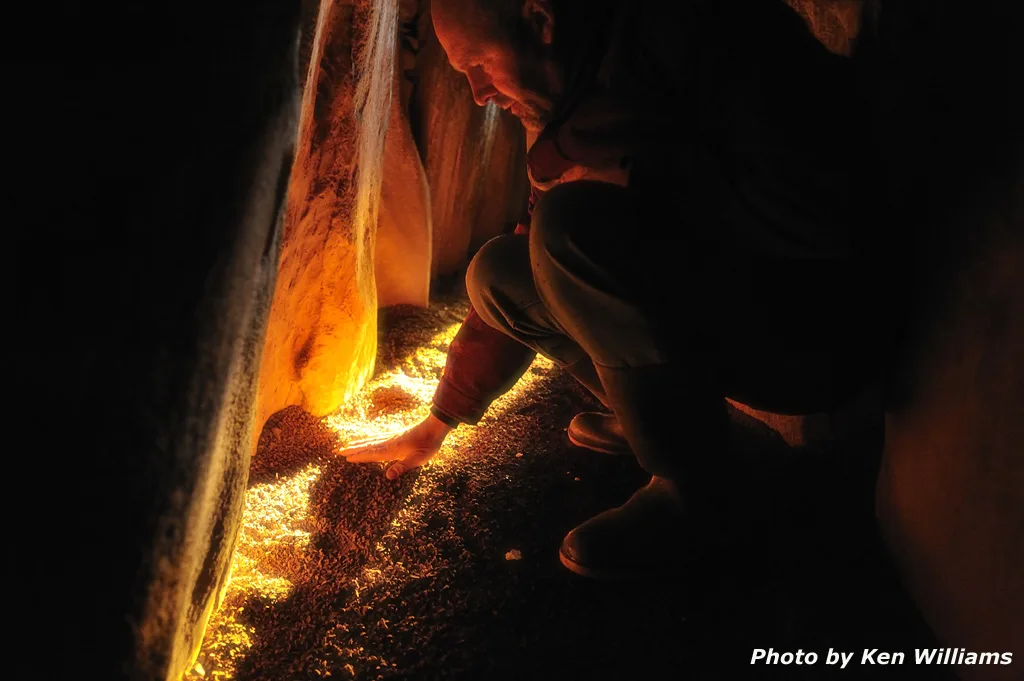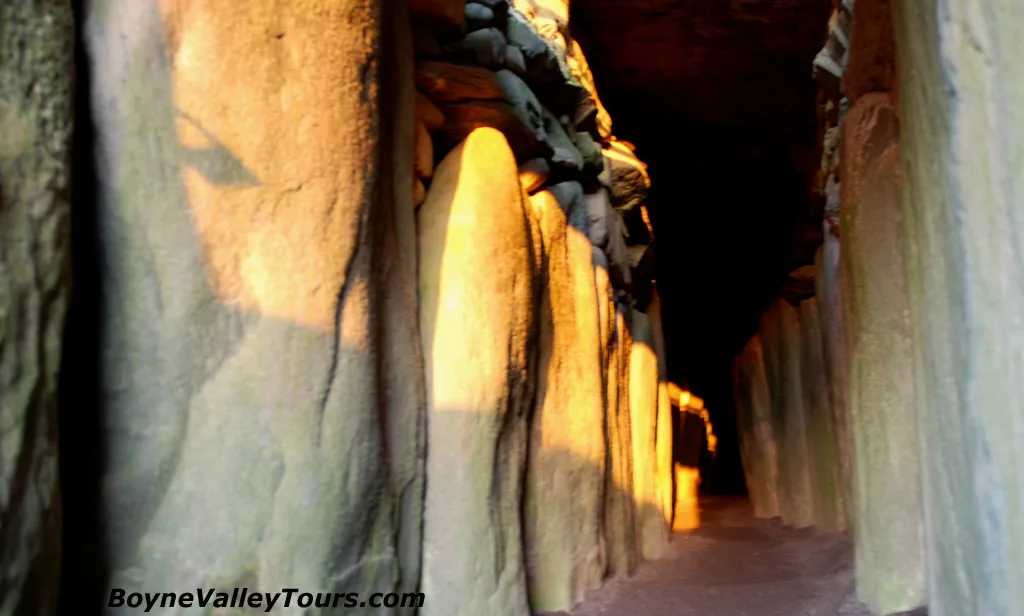 Book a tour
Book a tour
Winter Solstice Sunrise alignment at Newgrange
During the winter solstice at Newgrange, a mesmerizing event unfolds at this ancient Irish monument. Perched on a ridge overlooking the River Boyne in Ireland’s Ancient East, Newgrange, a Neolithic passage tomb, emerges as a focal point of celestial wonder during the year’s shortest days.
Approaching the sacred site in the predawn darkness, visitors feel a palpable sense of anticipation hanging in the crisp winter air. The haunting silhouette of Newgrange against the early morning sky provides a glimpse of the mystique that lies within. Excitement builds as attendees join a gathering of fellow seekers, all drawn to witness the magical spectacle as the sun graces this venerable monument.
The Neolithic architects, with astonishing precision, aligned Newgrange to capture the sun’s rays on mornings around the winter solstice. The atmosphere is charged with a profound sense of reverence and connection to the past as the first light of dawn unveils the intricate facade of this ancient tomb.
In the presence of ancient stones and carved symbols, observers witness a celestial phenomenon marking the rebirth of light. As the sun ascends in the sky, its rays penetrate the narrow passage, gradually illuminating the inner chamber. The once-darkened space transforms into a radiant spectacle, bathed in a warm, golden glow.
Visitors immerse themselves in the ancient energy of Newgrange, marveling at the ingenuity of those who, thousands of years ago, designed this sacred place as a testament to their understanding of the cosmos. Feeling the weight of history, they trace their fingers over the megalithic art that adorns the stones, recounting tales of a bygone era.
The winter solstice at Newgrange transcends being merely a celestial event; it becomes a profound journey into the heart of human connection with nature and the cosmos. As observers stand amidst the ancient stones, witnessing the dance of light and shadow, and absorbing the collective awe of those around them, they carry with them a piece of the timeless magic that defines this extraordinary experience at Newgrange.
Newgrange has gained worldwide renown for the illumination of its passage and chamber by the rising sun during the mornings surrounding the winter solstice. Positioned above the entrance to the passage is a window-like opening known as a roof-box. Its purpose is to permit sunlight to enter the chamber on the shortest days of the year, typically around December 21st, during the winter solstice. At dawn, for several days both preceding and following the winter solstice, a narrow beam of light penetrates the roof-box, reaching the floor of the chamber.
As the sun ascends, the beam gradually widens within the chamber, casting a dramatic illumination across the entire chamber. This captivating event spans 17 minutes, commencing around 9 a.m. The precision of Newgrange as a time-telling device is remarkable, especially when one considers that it was constructed 500 years prior to the Great Pyramids and over 1,000 years before Stonehenge. The Stone Age farmers who built Newgrange undoubtedly intended to mark the onset of the new year. Moreover, it may have functioned as a potent symbol of life’s triumph over death.
Annually, the winter solstice event at Newgrange garners significant attention. Scores of individuals assemble at the ancient tomb, echoing the practice of those from 5,000 years past, eagerly awaiting the break of dawn. The demand to secure a spot inside the chamber during the solstice is so high that allocations are determined through a solstice lottery. Regrettably, like many Irish events reliant on sunshine, the experience may be limited if the skies are overcast. Nevertheless, unanimous agreement prevails that waiting in the darkness, mirroring the ancient tradition, for the longest night of the year to conclude is an extraordinary and poignant experience.
Newgrange Winter Solstice 1967
The Winter Solstice Sunbeam inside Newgrange was initially observed in modern times by Professor Michael J. O’Kelly, who conducted excavations at Newgrange from 1962 to 1975. During the early stages of excavation, local visitors often shared a tradition with the Professor O’Kelly, mentioning that the rising sun, at an unspecified time, would illuminate the triple spiral stone in the end recess of the chamber at Newgrange. Unfortunately, despite numerous inquiries, no one could be found who had witnessed this phenomenon. Initially, the Professor O’Kelly assumed there might be confusion with Stonehenge and its mid-summer sunrise alignment.
Professor O’Kelly became intrigued with the possibility of a solstice sunrise alignment and began considering the possibility that a south-east orientation would be accurate at the mid-winter solstice. He started to believe that this tradition might be more than a product of local confusion. Deciding to abandon Christmas preparations to his wife, Claire, Professor O’Kelly embarked on the long journey from Cork to Newgrange on the day before the winter solstice, the shortest day of the year, to test out his hunch.
Several minutes before sunrise on December 21, 1967, Professor O’Kelly stood alone in the darkness of the chamber at Newgrange, contemplating what, if anything, would transpire. To his astonishment, with each passing minute, the chamber gradually brightened, and a beam of sunlight began to permeate the passage, illuminating everything in its path, “lighting up everything as it came until the whole chamber – side recesses, floor and roof twenty feet above the floor – were all clearly illuminated”. O’Kelly stood motionless for a while, captivated by the phenomenon, convinced and somewhat fearful in his own imagination that the Dagda, the sun god attributed to the ancient tradition of building the tomb, might hurl the roof upon him.
Fortunately, the roof remained in place, the sun retreated and he walked from the tomb, the first person to have witnessed the light of the sun penetrate the darkness of the chamber at Newgrange since ancient times. Subsequent work by Dr. Jon Patrick, commissioned by O’Kelly, established that the orientation of Newgrange towards the rising sun of the winter solstice was deliberate. He reported that, “It therefore seems that the sun has shone into the chamber ever since the day of its construction and will probably continue to do so forever.” Further observation by O’Kelly established that the spectacle occurs for a number of days before and after the winter solstice. He himself would witness it at least once a year for the remainder of his life.
“Between the bright sky and the long glittering silver ribbon of the Boyne the land looks black and featureless. Great flocks of starlings are flying across the sky from their nighttime roosts to their daytime feeding places. The effect is very dramatic as the direct light of the sun brightens and casts a glow of light all over the chamber. I can even see parts of the roof and a reflected light shines right back into the back of the end chamber.” The recorded words of Prof O’Kelly spoken in the tomb of Newgrange on the 21st of December 1969.
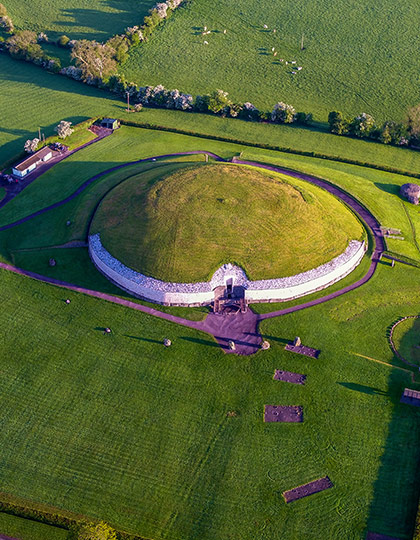
Newgrange & Boyne Valley

8hrs | €650 + Booking Fees

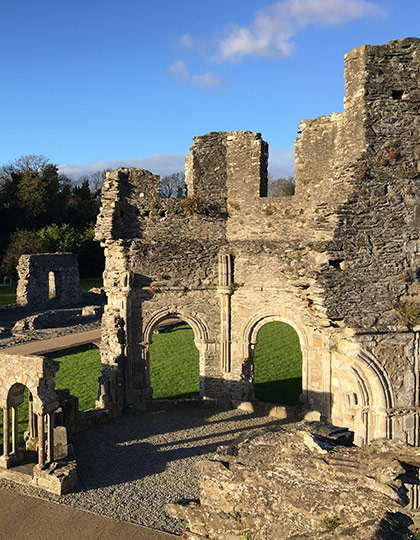
Boyne Valley Castles & Abbeys

8hrs | €650 + Booking Fees

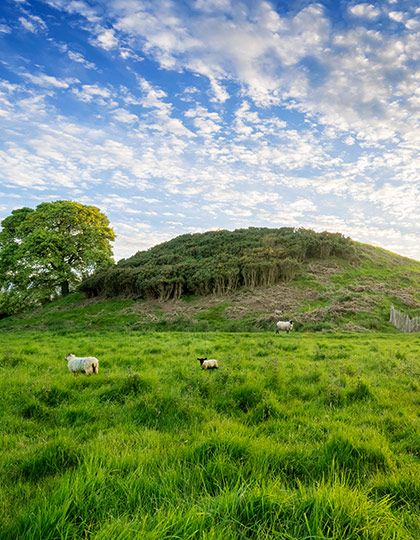
Meath Megalithic Sites

8hrs | €650 + Booking Fees

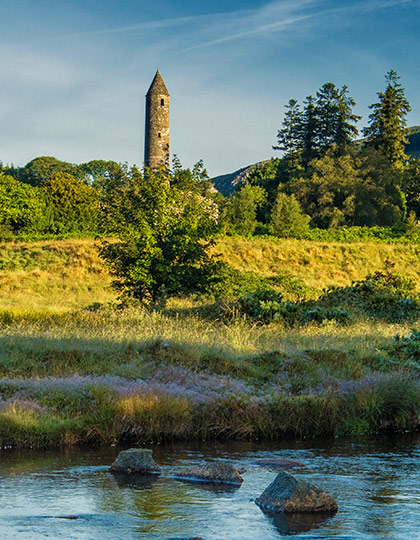
Glendalough & Scenic Wicklow

8hrs | €650 + Booking Fees

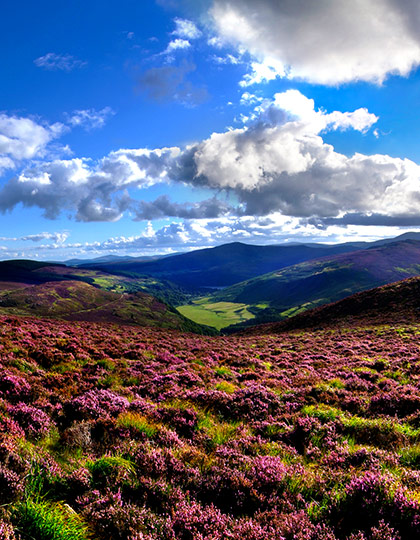
Wicklow Gardens & Scenery

8hrs | €650 + Booking Fees

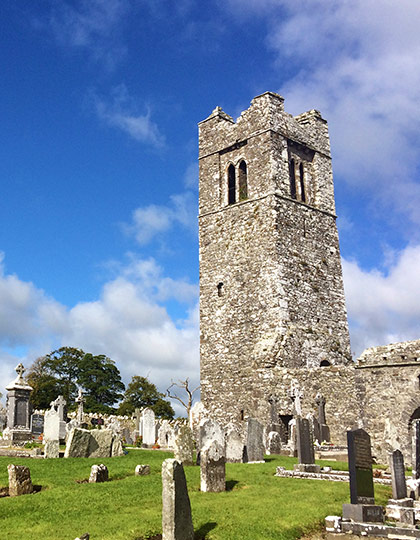
Cruise Excursions

8hrs | €650 + Booking Fees





